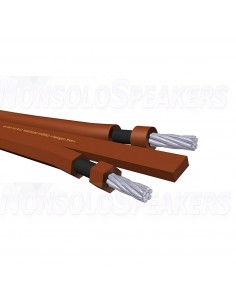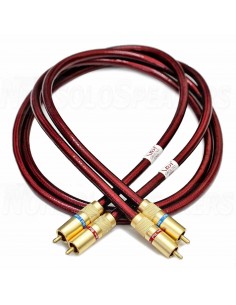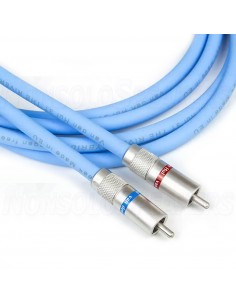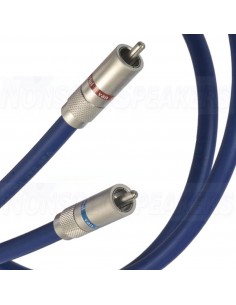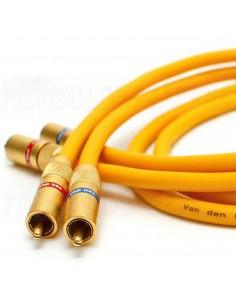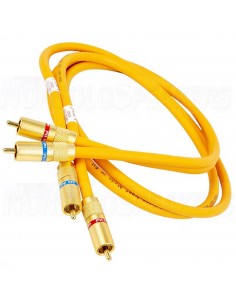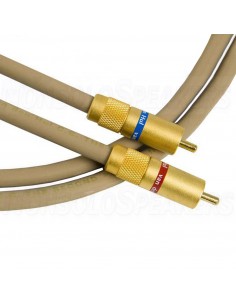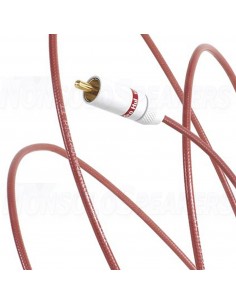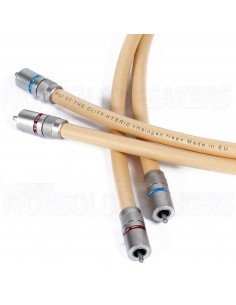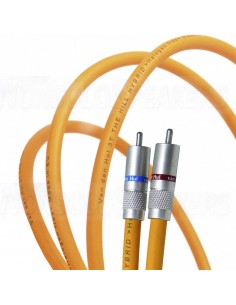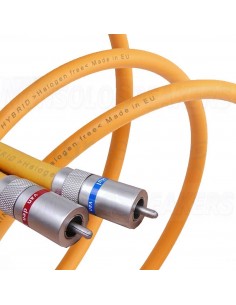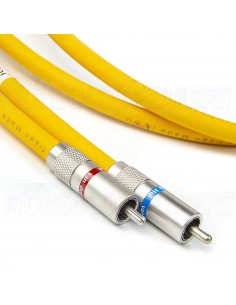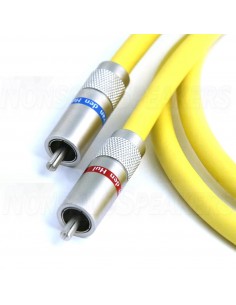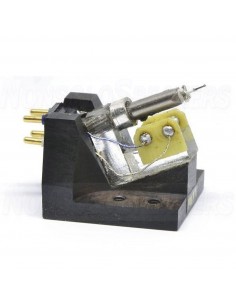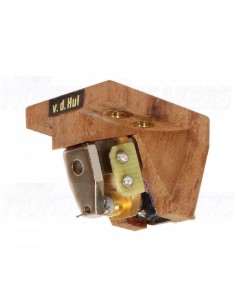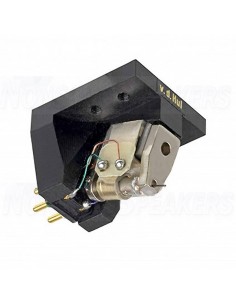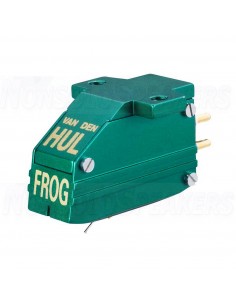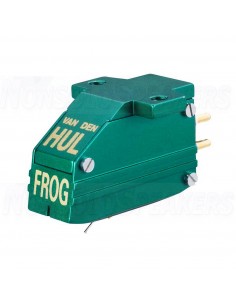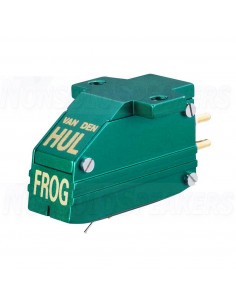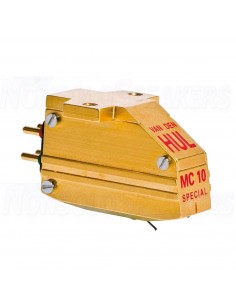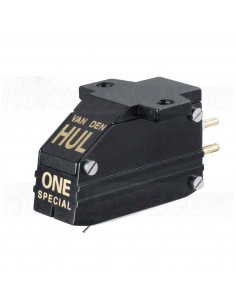Van Den Hul The-DIGI-COUPLER 75 Ohm Halogen Free 1.5 meter
Our on special request designed very low radiation digital interconnect. An amazing 126 dB emission damping at 1 GHz and 84 dB damping at 4 GHz. The impedance is 75 Ohm +/- 0,5 Ohm till 4 GHz. The ideal electrical link between any 75 Ohm source and 75 Ohm load. Think about player-converter connections. This cable is also very perfect in XY-component, RGB and S-VHS combinations. With durable gold tone HULLIFLEX®(*) jacket
With 2 gold plated C - 8.4 (RCA)
The DIGI-COUPLER 75 Ohm is our top level SPDIF digital audio interconnect cable, though is equally suited for Video and HF signal transport at a maximum performance level.
The DIGI-COUPLER 75 Ohm has been specially designed bearing the highest possible transmission quality of 75 Ohm impedance level SPDIF consumer format digital audio in mind, and is aimed at the critical audiophile as well as the professional.
The DIGI-COUPLER 75 Ohm’s special design covers all aspects required for a flawless and reliable transmission of SPDIF digital audio at short range as well as across large studio distances and allows for notable improvements in your audio quality.
The cable’s strict HF design likewise benefits the transport of Video and HF signals well into the GigaHertz range.
Features:
- The DIGI-COUPLER 75 Ohm features a very constant and precise 75 Ohm impedance: 75 Ohm ± 0.5 Ohm up to 3 GHz.
The DIGI-COUPLER 75 Ohm features a very high frequency bandwidth.
As an example: The -3 dB bandwidth of a 10 m. run is 770 MHz. (For more data see Attenuation graph in the sidebar)A high bandwidth is important: An SPDIF digital audio signal contains frequencies that extend far beyond the usually specified minimum required bandwidth (~6 MHz). Even though this minimum bandwidth provides useable transmission, accurate data transmission and recovery of low-jitter clocks in real-world noisy environments will benefit from greatly increased bandwidth:The digital audio signal consists of elementary data units (bits) in the form of zeros and ones. These are square waves (merlon shaped elements) which vertical edges serve as a demarcation for the signal receiving circuitry (e.g. D-to-A converter) to be able to retrieve the signal clock and to recognise the contained bit values.Cable bandwidth decreases with cable length used. Lower bandwidths increasingly cause the digital audio signal’s square waves edges to get rounded off and become smeared over time (inter-symbol interference). This impairs the receiving circuitry’s ability to correctly determine the individual bit values and their timing
- The DIGI-COUPLER 75 Ohm features a very low signal attenuation per unit length. As an example: At 100 MHz the attenuation is a mere 0.11 dB/m. (For more data see HF Performance Graphs in the sidebar).Low signal attenuation (i.e. low signal loss) is especially important when long cable runs are used (e.g. in professional / studio applications).To maintain optimum signal quality, a maximum signal to noise ratio at the signal receiving side is required. The signal therefore needs to undergo as little as possible attenuation during transport. This of course equally applies to digital audio as to video and HF signals.A low signal attenuation also positively adds to immunity against external noise, though latter starts with a good shielding:
- The DIGI-COUPLER 75 Ohm is a so-called “Superscreened” or “Low Transfer Impedance type” cable.
To maximize performance in keeping the signal in and noise (RFI and EMI) out, the highest possible shielding factor is required. Without making compromises, The DIGI-COUPLER 75 Ohm’s design therefore features a so-called “triaxial construction” which makes use of multiple highest quality shields.
In The DIGI-COUPLER 75 Ohm not less than 3 dense braided shields, 3 foil shields and a Linear Structured Carbon ® (LSC) saturated outer layer are used, which combined shielding factor results into an ultra high screening attenuation and an ultra low transfer impedance; This allowing the cable to carry the designation “Superscreened”.
The DIGI-COUPLER 75 Ohm’s supreme immunity against radio frequency and electromagnetic interference allows trouble-free use of large lengths. Multiple lengths can be run in parallel without risk of mutual interference, even with other cabling (e.g. in cable conduits).
- The DIGI-COUPLER 75 Ohm features high purity dense silver coated stranded shields as well as a rugged and hard-wearing jacket made of our HULLIFLEX ® polymer insulation material. All providing an optimal protection against chemical (corrosive) attack from the outside world and ensuring a very long lifespan.
Bearing professional, broadcast and high resolution applications in mind, The DIGI-COUPLER 75 Ohm’s design has all the technology on board for exceptional performance without compromise.
The DIGI-COUPLER 75 Ohm provides the cleanest possible signal transport in all 75 Ohm impedance level applications and is the ultimate choice for the critical audiophile, videophile and professional.
Next to our standard sales units (see specifications below) The DIGI-COUPLER 75 Ohm is also available on 100 m. reels fitted with end-caps to prevent any entrance of chemically polluted air.
Products from the same category
Products from the same brand

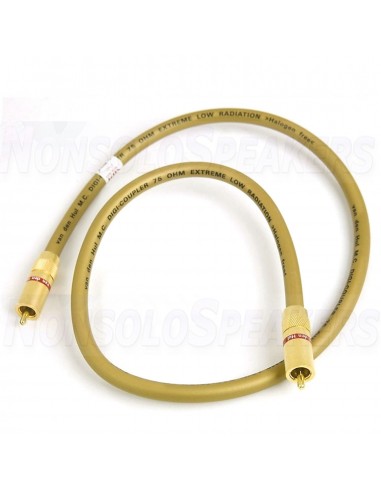

 No review at the moment
No review at the moment

